How it started
I do believe my story is very similar to other Sketchnoters. Back in 2012 I realized that my notes were not working: hard to take, hard to use and later finding the information I was looking for wasn’t always easy.
I started by googling about note taking, capturing techniques etc. and hidden (3rd page) in a plethora of links to tutorials by those Evernote experts or the ubiquitous Mind Maps, I found this post by Mike Rohde:
SXSW Sketchnotes: 2012
Wait, what? Sketchnotes? Mike who? Who is this guy?
I did read the entire Mike’s blog and my journey as a sketchnoter started there.
A Tribute to : the Father of Sketchnote
I had the privilege to know Mike in person and to work with him on the Sketchnote Army website and it shaped the way I sketchnote and, yes, how I think.
Mike is active here on Substack and I can’t recommend enough his newsletter
.The never ending conversations about Sketchnotes
Once upon a time, when Twitter was Twitter and #penporn was actually about pens, the Sketchnoters community was always engaged in long conversations about the practice of Sketchnote. Among all topics these were the ones I loved the most:
What is a Sketchnote?
One n’ Doners vs 2 Timers
Flow vs Structure
Tools
Defining “Sketchnote”
I really tried so hard to find a definition of Sketchnote that would capture its complex nature, yet fundamentally simple essence.
Eventually, I realised it doesn’t matter. The good thing is that I found myself with a nice amount of material and I decided to turn that body of work in a book: The xLontrax Theory’s of Sketchnote .
One n’ Doners vs 2 Timers
I’m definitely a 2 Timer! First and foremost because, if I want my sketchnotes to be readable and understandable by other people I need to draw and write slowly.
Plus, I love to follow every idea or hint that can come up while reviewing the drafts.
Just to give you an idea, almost every sketchnote in my newsletters is the fruit of at least a couple of iterations. And, yes, I still forget some typos here and there he he he.
However, when I take notes at work, particularly during calls and meetings, it has to be one n’ done so I developed a system which is a mix of sketchnote, mind map and bullet journal. The outcomes are not always good looking but it works: I can capture first, find and recall later, everything important.
Besides Mike Rohde one of the most formidable One n’ Doners I know is
aka ProfClayton .Flow vs Structure
It is the natural follow up in the conversation. I just use a page from my book, not because I’m lazy (well, yeah, a bit) but because I couldn’t explain it better.
It doesn’t matter if you are a One n’ Doner or a 2 Timer, you can set a structure in advance and fill it or just create the flow of your sketchnote while making it.
The important part is that a Sketchnoter is able to compose the Sketchnote with harmony, balance and rhythm so that it is readable and understandable.
If you want to explore some examples of flows and structures I suggest to look into the works of these super talented Sketchnoters
The Tools of the Trade
Every single Sketchnoter I know has spent a little fortune in tools: pens, pencils, markers, notebooks and don’t get me started with fountain pens.
Even if today I sketchnote mainly digitally on my iPad ( before you ask, I use Paper by Wetransfer), I still have drawers full of markers, pencils and inks and I make my own notebooks.
However, and I can say this happened not only to me, I found that defining a limited toolset and mastering the use of them is ways more satisfying, more productive and more creative than constantly trying something new.
In my line of work, staying informed about UI and UX is essential. A lot of time I found that the best practices for creating a compelling website can be applied to sketchnotes too.
I’m a huge fan of
and her and I must say I found there a lot of inspirations to improve my sketchnotes.Wrapping up
If you are interested to see how my sketchnoting style evolved you can find some of my work in this Sketchnoters Flickr album, including the first one made analogically.
Other collections you can find useful are:
100+1 Drawing Ideas for Sketchnoters and Doodlers : a collection of 101 simple drawing tutorials that eventually became a book.
Sustainable Development Goals - #SDGSketch Project : a project I did in 2016 to spread the awareness about the UN 2030 Agenda for Sustainable Development. Everything there is free to use, share, print.
And there is my zero-to-hero sketchnoting class on Skillshare: Sketchnote4Everybody (Skillshare - 30 days free trial)
When it comes to sketchnote I can go on for ages but I guess it’s enough for this time, right?
See you next month?
Mauro
PS: a kind of Colophon
Just a few words about where you can find some of the things I do/did:




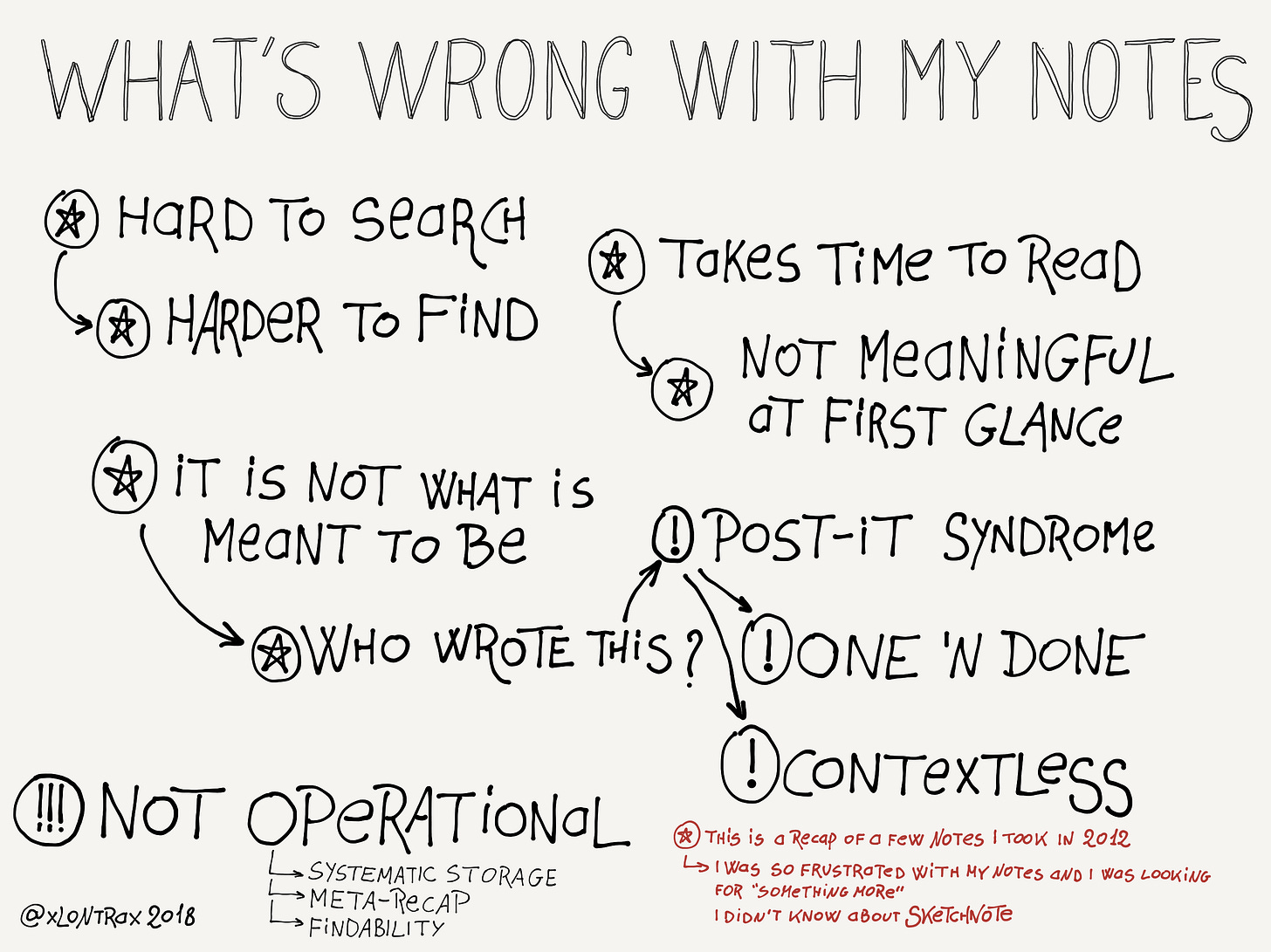
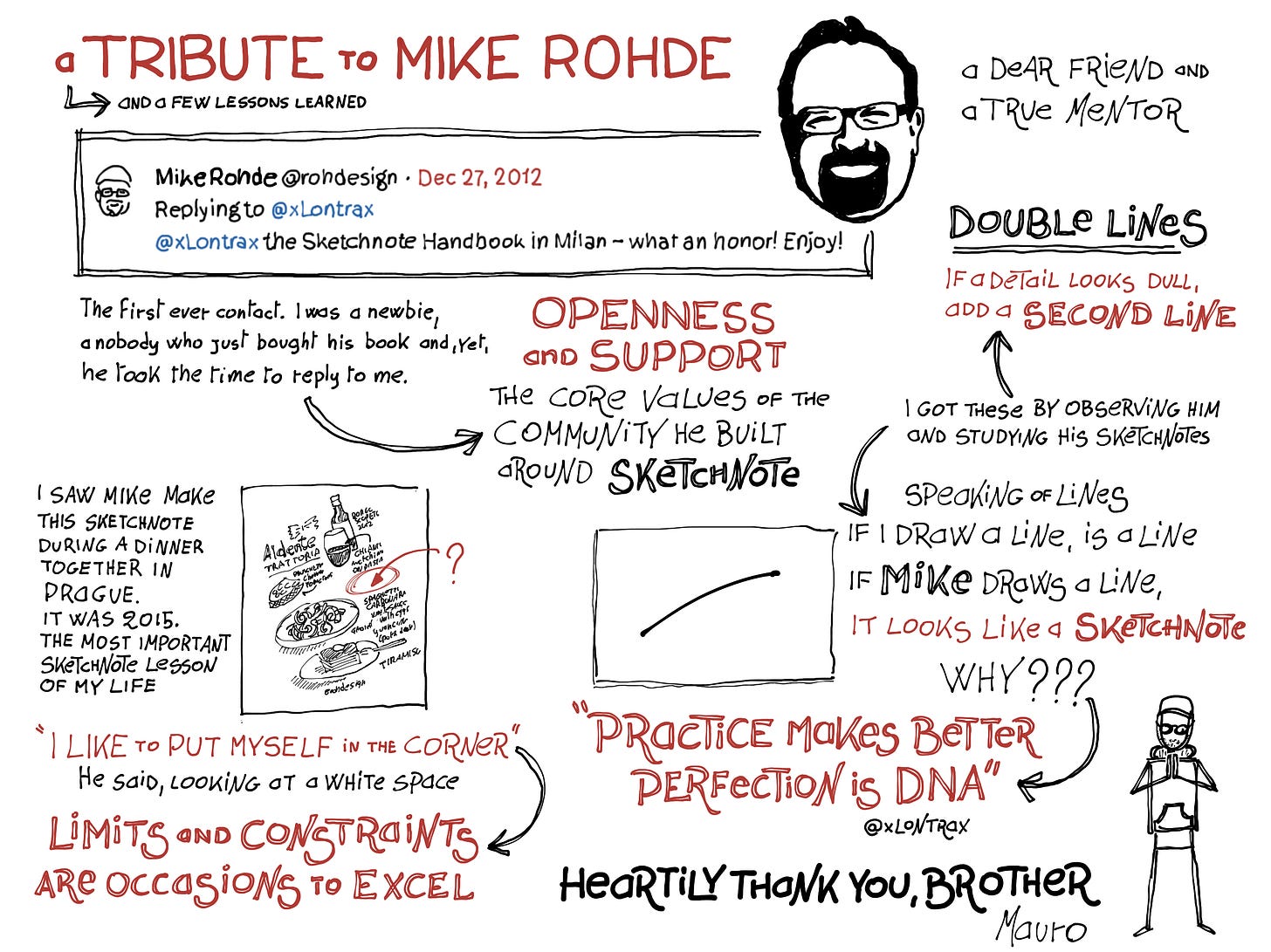
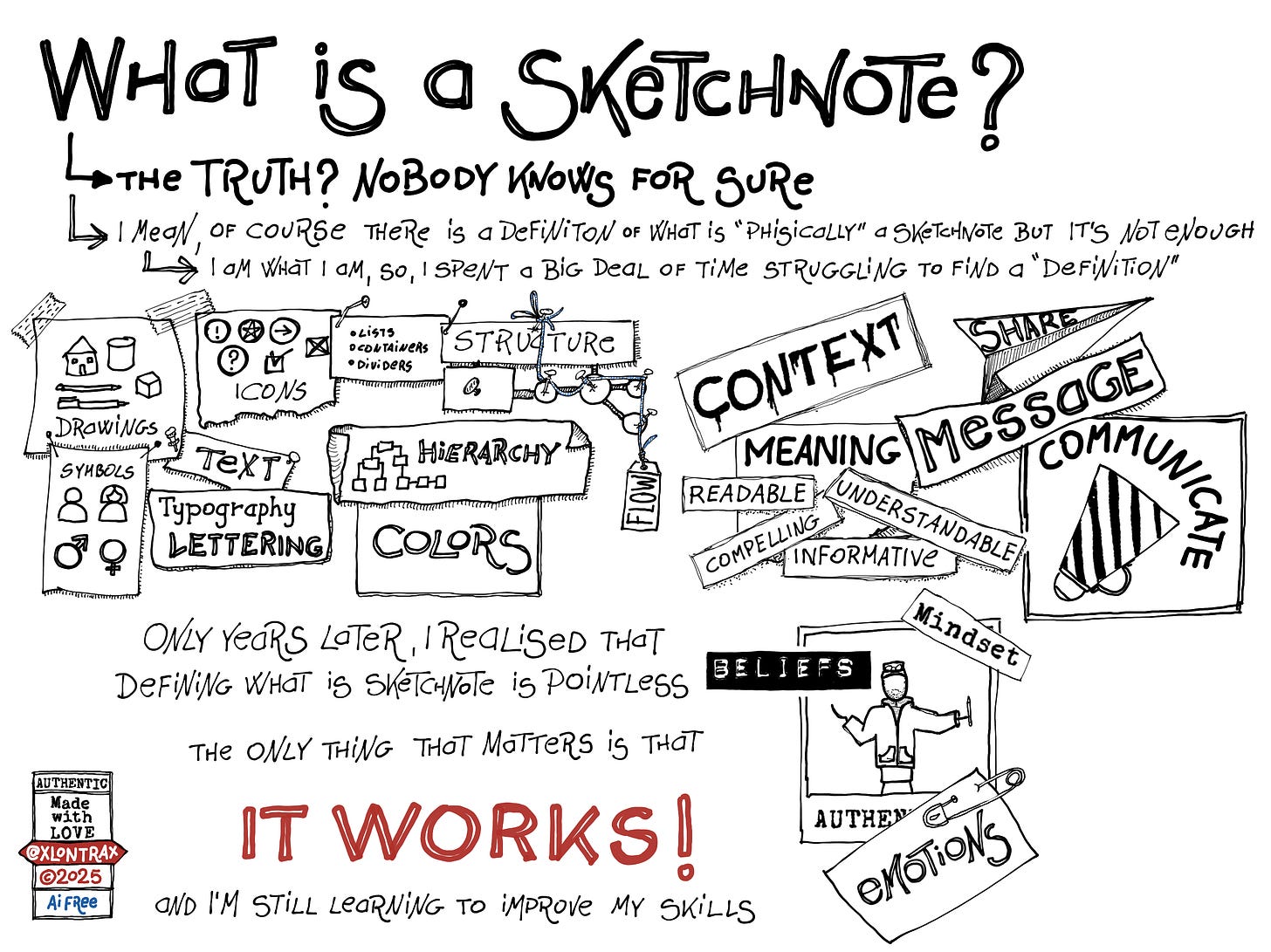
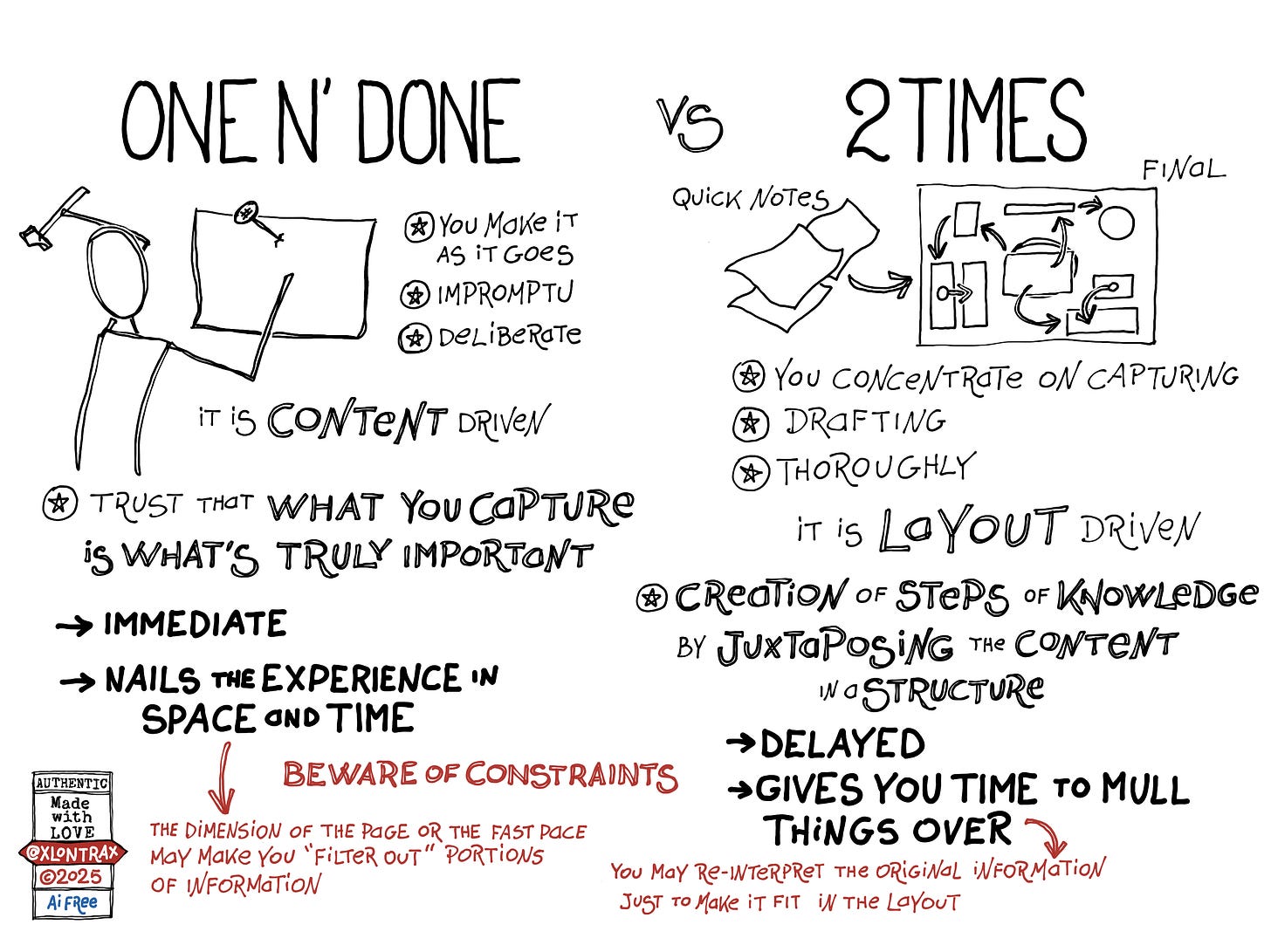
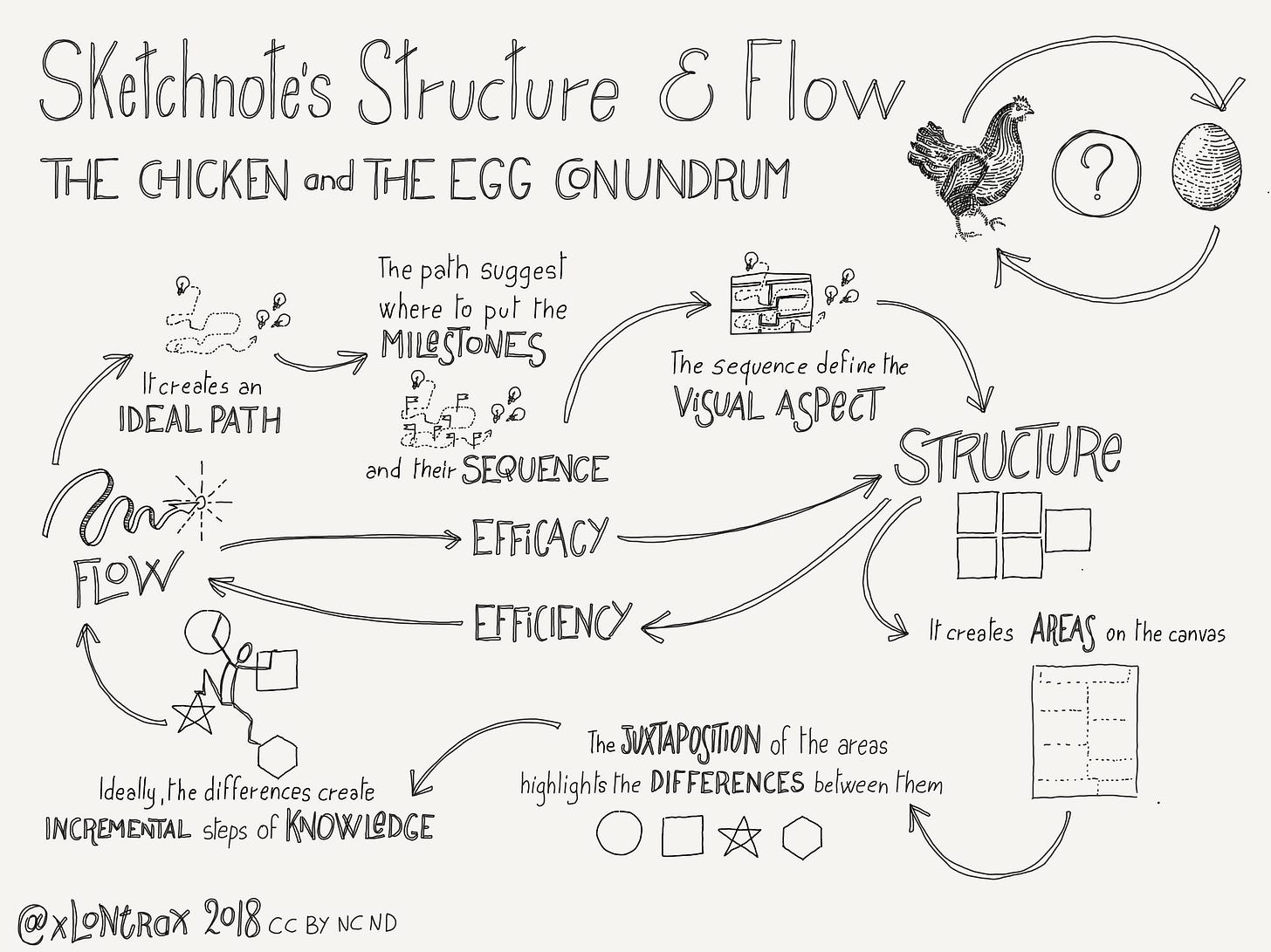
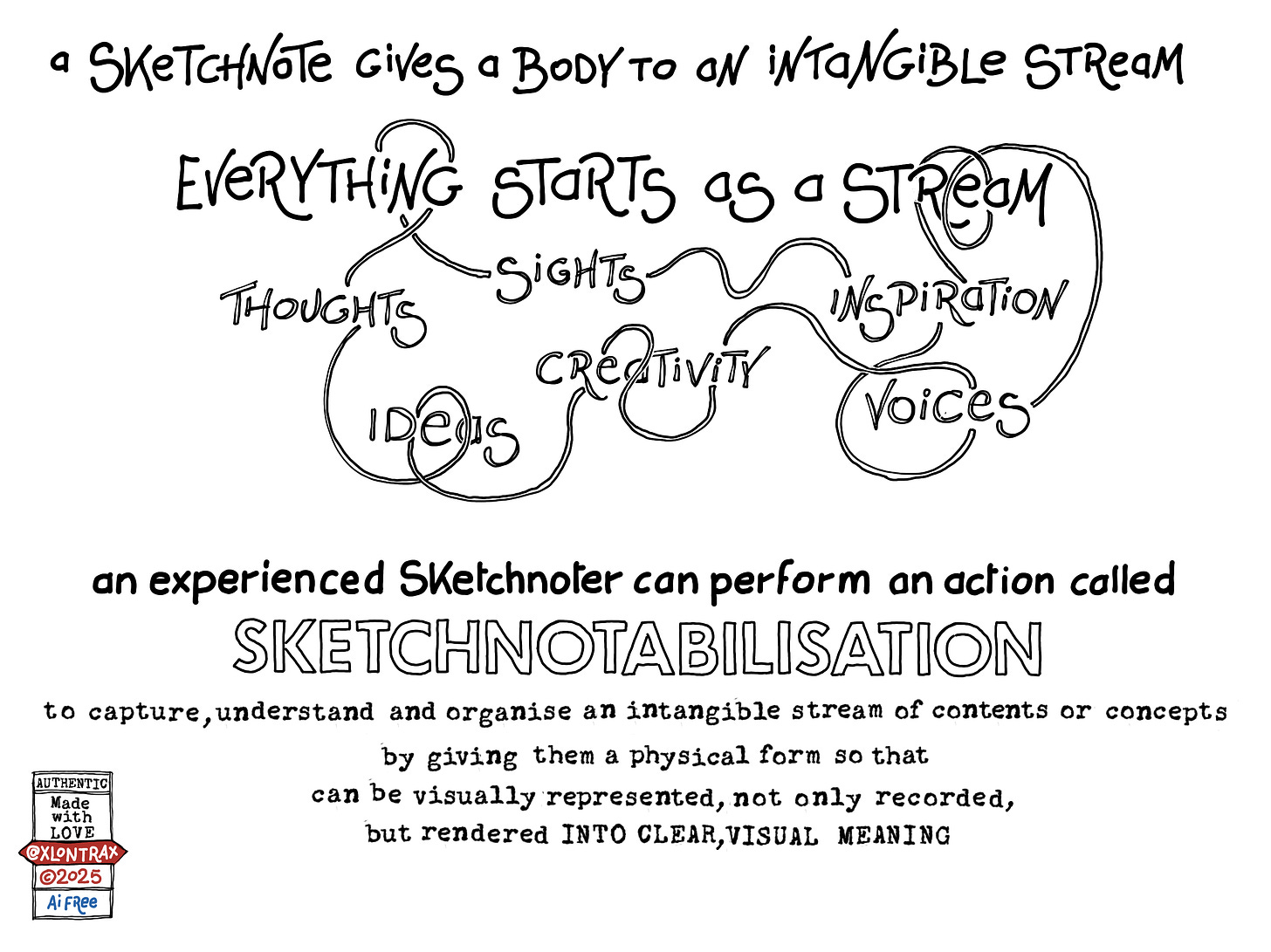
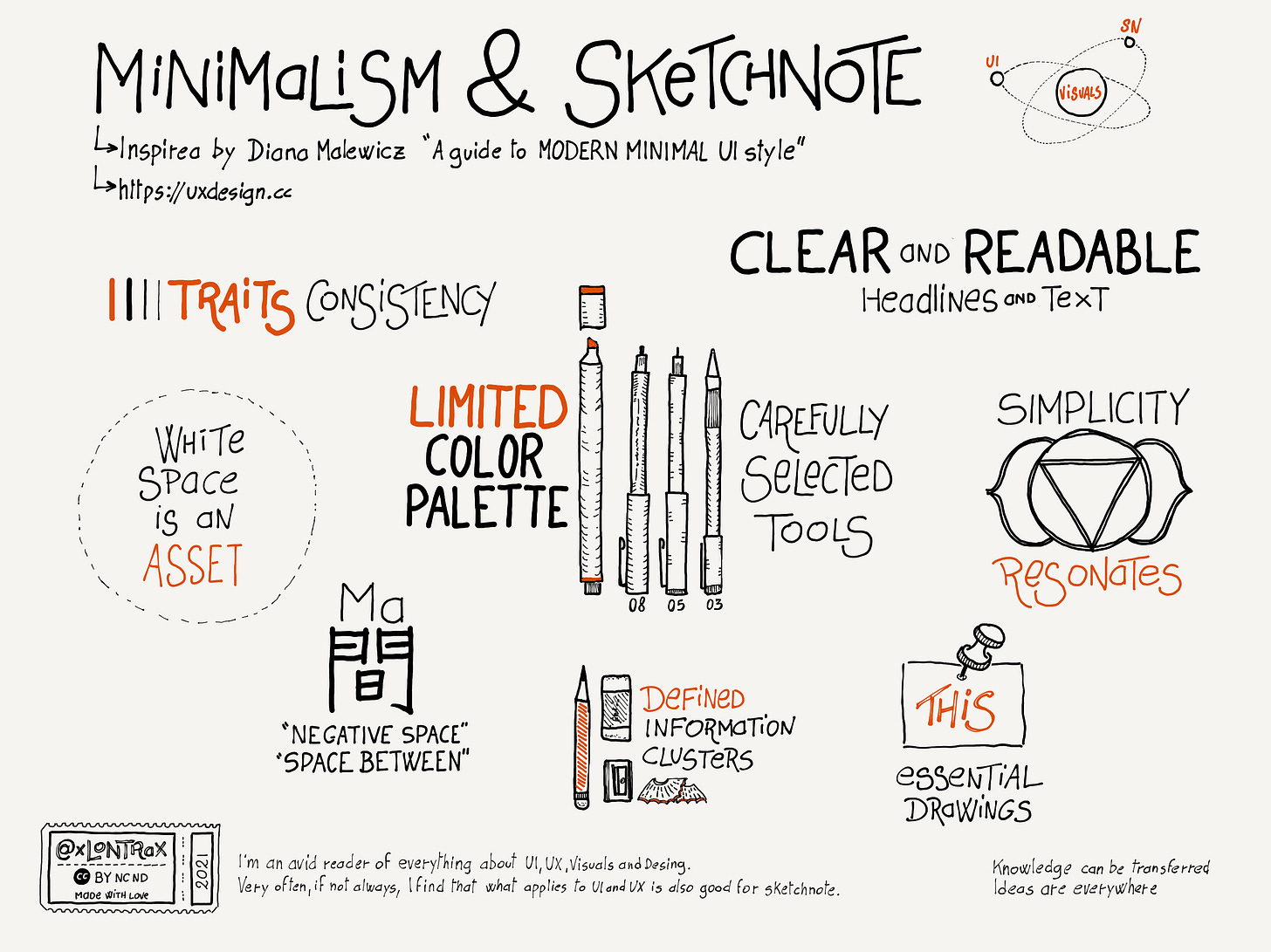

What an honor to be mentioned, Mauro! Your friendship has been a blessing because you are constantly exploring and pushing the boundaries of sketchnoting and its meaning. Thank you, thank you! See you in Verona!
A good one! I started with mindmaps under Buzan. But stuff started to make sense when i ran into holger Nils Pohl, and then you, makayla and all the wonderful sketchnoters at the museum tours during covid.
You, mauro was my Rohde. Thank you